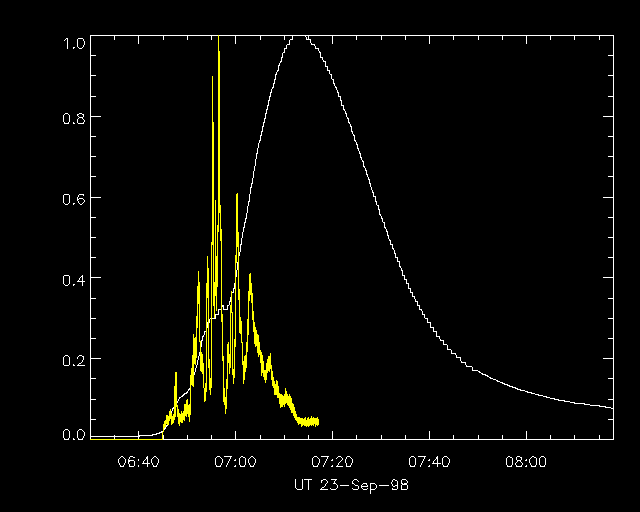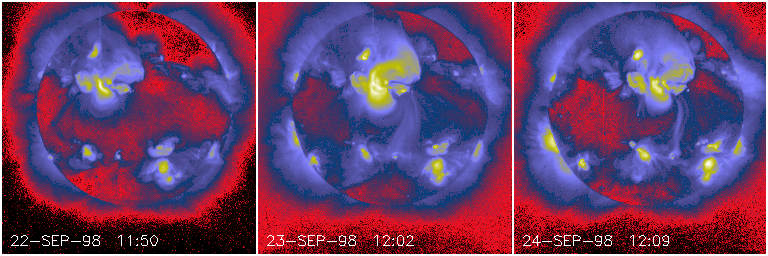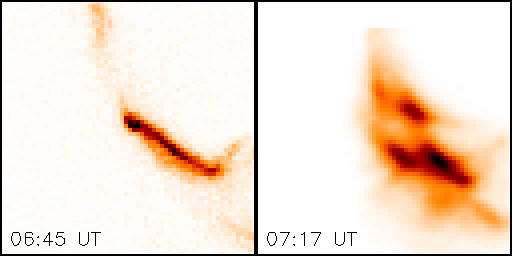
Sometimes a wonderful phenomenon slips past our eagle-eyed view. This science nugget reports a really wonderful set of observations of a major flare/CME event, not because there is a discovery here, but to support a SHINE/GEM/CEDAR campaign brought to our attention by SoHO astronomer Simon Plunkett, who unfortunately did not explain what all those acronyms stood for. This means that this event was one of three really interesting geomagnetic disturbances, and we're lucky that Yohkoh observed this one so well because SOHO was off on a lark at the time. The flare in question occurred a year and a half ago, September 23, 1998, and so far as we know has remained un-analyzed thus far. We should have written a science nugget then!
Below we'll show some light curves of the flare development, and some whole_sun images. As usual, click on the images to enlarge and beautify them:

We see from the GOES and Yohkoh HXT (33-53 keV) time histories above (click on the image to improve the colors) that this event, as well as being an LDE as is commonly the case (but not always) for a CME association, had a powerful and long-lasting hard X-ray emission. For the "impulsive" phase to last so long, challenging the appropriateness of its name, is certainly unusual.

One image per day, the one in the middle just a few hours after the flare began. Quite beautiful! Note the extremely interesting coming-and-going of trans-equatorial loops, recently implicated in CME formation by Khan (see the cover artwork for Geophysics Research Letters, April 15, 2000). One question for the SHINE/GEM/CEDAR folks obviously would be whether or not the magnetic connections of these large structures implied a "geoeffective" configuration if they blew away and became a CME headed toward the Earth.

These three movies are all in different color tables, in a desperate and not-too-successful effort at getting things to show up properly in .mpg format. They represent the three summation modes for: low, medium, and high resolution, with the respective fields of view 10, 5, and 2.5 arc min approximately. All show the complicated ejective motion, and (take my word for it) the high-resolution images are among the most interesting, because they give the appearance of motion sliding along the elongated structure, as well as perpendicular to it: maybe a clue as to how this structure unpacks itself to become a CME.
The comments above have only scratched the surface of beautiful set of observations. We observe this event from its very beginning, shown in the high-resolution still image below:

Left is the first image of flare mode, at the very beginning of the light curves shown above. Right, the end of the impulsive phase. The first image reveals a linear feature elongated in the inferred direction of the magnetic inversion line; this feature also shows up in hard X-ray images from HXT. The structure is too thin to resolve. What is it? One is tempted to speculate that this is a low-lying energetic structure, which lies between the ribbons of the developing arcade, which appears in the image on the right. We are watching an arcade grow from compact beginnings all the way to the huge size shown hours later in the full-Sun image above; the initial growth involved strong non-thermal effects. We have seen such things before, but never under such salubrious conditions.